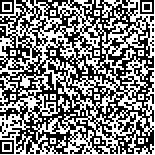| 引用本文: | 王维刚,史海滨,李仙岳,孙亚楠,张文聪,周慧.基于改进SWAT模型的灌溉-施肥-耕作对乌梁素海流域营养物负荷及作物产量的影响.湖泊科学,2022,34(5):1505-1523. DOI:10.18307/2022.0508 |
| Wang Weigang,Shi Haibin,Li Xianyue,Sun Yanan,Zhang Wencong,Zhou Hui.Effects of irrigation-fertilization-tillage on nutrient loading and crop yield in Ulansuhai watershed based on improved SWAT model. J. Lake Sci.2022,34(5):1505-1523. DOI:10.18307/2022.0508 |
|
| |
|
|
| 本文已被:浏览 5141次 下载 3304次 |

码上扫一扫! |
|
|
| 基于改进SWAT模型的灌溉-施肥-耕作对乌梁素海流域营养物负荷及作物产量的影响 |
|
王维刚1,2, 史海滨1,2, 李仙岳1,2, 孙亚楠1,2, 张文聪1,2, 周慧1,2
|
1. 内蒙古农业大学水利与土木建筑工程学院,呼和浩特 010018;2.
2. 高效节水技术装备与水土环境效应内蒙古自治区工程研究中心,呼和浩特 010018
|
|
| 摘要: |
| 不合理的灌溉、施肥和耕作是导致乌梁素海流域农业面源污染的主要根源,乌梁素海作为我国北方地区重要的生态安全屏障,多年来面临着湖泊水环境污染、水生态退化等问题,科学开展湖泊水环境综合治理首先要解决流域内农业面源污染问题. 研究通过修改土壤水平衡、溶质平衡、地下水平衡和作物生长等模块对SWAT 2012原始版本进行改进,并采用改进的SWAT模型构建了乌梁素海流域分布式水文模型,利用实测径流、硝态氮与总磷排放量、地下水埋深以及作物产量校正和验证模型. 基于现状情景,以玉米、葵花和小麦3种主要作物为研究对象,设置了削减灌水量、施肥量及调整耕作方式3种农田管理情景. 基于改进SWAT模型不同情景的模拟结果,计算分析各管理情景下的硝态氮与总磷负荷及对各作物产量的影响. 结果表明,改进SWAT模型具有良好的模拟效果. 不同作物削减5%夏灌水量增产最多达8.41%~10.32%,削减10%秋浇水量均明显减少硝态氮和总磷负荷. 不同作物营养物负荷均随着氮磷施肥削减比例的增大呈现逐渐降低的趋势,但下降曲线逐渐趋于平缓; 各作物产量随氮磷施肥削减比例的增加呈先增加后减少的趋势,其中玉米、小麦氮磷施肥削减比例达20%时产量开始下降,葵花氮磷施肥削减比例达25%时产量开始下降. 不同作物营养物负荷与小麦产量均随耕作方式混合深度与混合效率参数的增大逐渐减小,而玉米和葵花产量则随耕作参数增大逐渐增加. 综合分析,削减5%夏灌水量+削减20%氮磷施肥比例+模板犁耕作组合玉米产量增幅最大达36.5%;削减10%秋浇水量+削减25%氮磷施肥比例+模板犁耕作组合葵花硝态氮负荷降幅最大达42.1%;削减5%夏灌水量+削减20%氮磷施肥比例+免耕组合小麦产量增幅最大达29.1%;而削减5%秋浇水量+削减20%氮磷施肥比例+常规春耕组合小麦硝态氮负荷减少最大达27.2%,总磷负荷减少最大达18.5%. 本研究可为降低流域内面源污染、提高作物产量及减少乌梁素海营养物入湖负荷农业管理措施的实施提供理论依据. |
| 关键词: 营养物负荷 作物产量 农业管理措施 改进SWAT模型 乌梁素海流域 河套灌区 面源污染 |
| DOI:10.18307/2022.0508 |
| 分类号: |
| 基金项目:国家自然科学基金项目(51539005,51769024)和内蒙古自治区水利科技重大专项(213-03-99-303002-NSK2017-M1)联合资助 |
|
| Effects of irrigation-fertilization-tillage on nutrient loading and crop yield in Ulansuhai watershed based on improved SWAT model |
|
Wang Weigang1,2, Shi Haibin1,2, Li Xianyue1,2, Sun Yanan1,2, Zhang Wencong1,2, Zhou Hui1,2
|
1. College of Water Conservancy and Civil Engineering, Inner Mongolia Agricultural University, Hohhot 010018, P. R. China;2.
2. High Efficiency Water-saving Technology and Equipment and Soil and Water Environment Effect in Engineering Research Center of Inner Mongolia Autonomous Region, Hohhot 010018, P. R. China
|
| Abstract: |
| Irrational irrigation, fertilization and farming are the main causes of agricultural non-point source pollution in Ulansuhai watershed. As an important ecological security barrier in northern China, Lake Ulansuhai has been facing problems, such as lake water environment pollution and water ecological degradation. To achieve the integrated management of lake water environment, agricultural non-point source pollution in the watershed must be controlled. The study improved the original version of SWAT 2012 by modifying the modules of soil water balance, solute balance, groundwater balance, and plant growth. A distributed hydrological model of Ulansuhai watershed was constructed with the improved SWAT model, which was calibrated and validated with measured runoff, nitrate nitrogen (NN), total phosphorus (TP) emissions, groundwater depth and crop yield. Three scenarios including reduced amount of irrigation, fertilization, and adjusted farming mode based on the current situation were applied on three main crops (corn, sunflower and wheat). NN and TP loadings and their effects on the crop yields under different management scenarios were simulated using the improved SWAT model. The results showed that the improved SWAT model has a good simulation fitting. For different crops, reducing the irrigation amount by 5% in summer can increase production by up to 8.41%-10.32%, and reducing 10% irrigation in autumn will significantly reduce the NN and TP loadings. The nutrient load of different crops showed a decreasing trend with an increasing reduction ratio of nitrogen and phosphorus fertilization (NPF), but the declining rate gradually became smaller. The yields of different crops increased first and then decreased with the ratio of NPF increase. When the ratio of NPF reduction reached 20%, the yield of corn and wheat began to decline, and when it reached 25% the yield of sunflower began to decline. The nutrient loads and wheat yield of different crops gradually decreased with an increase of the mixing depth and efficiency of the tillage mode, while the yield of corn and sunflower gradually increased with the tillage parameters. If combining cutting 5% of summer irrigation, reducing 20% NPF amount, and the template plowing combination, corn yield could increase by 36.5%. If cutting 10% of autumn watering, reducing 25% NPF, the template plowing combination, sunflower nitrate nitrogen load could reduce by 42.1%. If cutting 5% of summer irrigation, 20% reduction NPF, and no-tillage combination, wheat yield could increase by 29.1%. However, cutting 5% of autumn watering, 20% reduction NPF and conventional spring ploughing combination, NN loading of wheat farming could reduce by up to 27.2%, and TP loading could reduce by up to 18.5%. This research can provide a scientific basis for the implementation of agricultural management measures to reduce non-point source pollution, increase crop yields in Ulansuhai watershed and reduce the nutrients loads in Lake Ulansuhai. |
| Key words: Nutrient load crop yield agricultural management measures improved SWAT model Ulansuhai watershed Hetao Irrigation District non-point source pollution |
|
|
附件
|
|